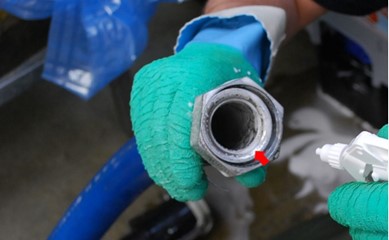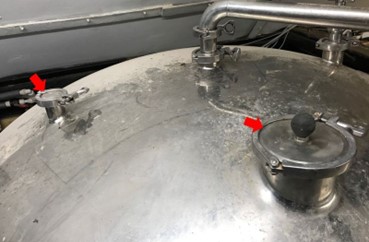Lactobacillus brevis is the most significant beer spoilage bacteria worldwide. It is found to be a contaminant at all stages of brewing, including primary and secondary fermentation, storage, filtration, and the packaging process. Many L. brevis strains can form biofilms.
L. brevis as well as other beer spoilage bacteria can colonise brewery biofilms. What makes biofilms so dangerous is that they provide protection against conventional chemical cleaning and disinfection, potentially leading to beer spoilage.
Over 95% of food product contamination and beverage contamination will come from bacteria embedded in a biofilm.
Biofilms are less likely to occur in the brewhouse than in the cold side of the brewery. However, it’s certainly possible for spores to survive the Mash Tun, so bacterial biofilms are possible anywhere up to the Kettle. It is extremely unlikely that biofilms will be found in the Kettle as only extremophiles would survive the boiling process and the only known place for them to exist is in hydrothermal vents on the oceanic floor near volcanic activity.
These bacteria, as well as other beer spoilage organisms in brewing, has been described as a late biofilm coloniser in brewery biofilms so dangerous for any hygienic production in the brewery, that they protect environmental stress factors such as:
- Oxidation
- Desiccation
- Antibiotics
- Biocides like Peracetic Acid and metal ions.
Work that was carried out with the National Biofilm Innovation Center and Camden BRI that conventional detergent chemistry whether that is caustic, caustic and hypochlorite, phosphoric acid or nitric acid-based detergents will not surprisingly remove a biofilm.
So how can we find these invisible biofilms?
Biofilms are most likely to be found on floors, drains and walls and outside of equipment. They can be found on the floor and be transferred to the cold side of the brewery on feet and portable equipment. So, it is a good idea to maintain floors and drains in the brewhouse as clean as you can.

Right: A picture of the areas to clean thoroughly to avoid biofilm build-up.
A significant risk of contamination is small parts of biofilm get broken off during cleaning of the floor and because they contain bacteria, those bacteria can gain access to inside the fermenter through these outlet mounts.
Top tips for biofilm control in the brewery
- Fermenting vessels- the underside of the lid, the rubber gasket, the valve or the fitting at the top of the vessel.
- Check for presence of biofilms regularly in FVs, CTs and BBTs using a biofilm disclosure.
- Check for biofilms in Mash Tun, Lauter Tun and Wort Cooler. If biofilms are found to be present circulate a 3% solution of Scrub A Duck for 60 minutes at 50℃ until the biofilms have been removed.

If biofilms are found to be present, they can be removed with the application of our new enzymatic cleaning product, Scrub A Duck!
A tough enzymatic cleaner that will remove existing biofilms and prevent their reappearance in the brewery. It can be used at low temperatures and is non-corrosive.

This low carbon footprint product is perfect for breaking down the organic soiling in your vessels and simultaneously removing and preventing bacterial biofilms.
Scrub A Duck will refine your cleaning in the brewhouse and ultimately improve the quality and sensory profile of your beer.
Email our technical team to find out more about our powerful enzymatic cleaner techsupport@murphyandson.co.uk.

